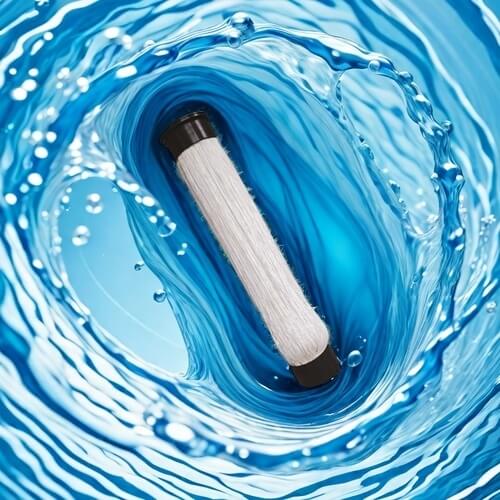Technical Scheme for Electroplating Cleaning Wastewater Treatment
The electroplating cleaning wastewater treatment technology scheme is an important method for effectively treating the wastewater generated in the electroplating industry. The wastewater generated during the electroplating process usually contains heavy metal ions, acidic and alkaline substances, and other pollutants. If not treated, it will pose a serious threat to the environment and human health. This article will explore the technical solutions for electroplating cleaning wastewater treatment from multiple aspects, including wastewater composition analysis, treatment technology selection, equipment configuration, operation management, economic benefit evaluation, and policy and regulatory support. Through detailed analysis of these aspects, the aim is to provide practical and feasible wastewater treatment solutions for the electroplating industry, promote sustainable development, and reduce negative impacts on the environment.
Analysis of wastewater composition
The composition of electroplating cleaning wastewater is complex and diverse, mainly including heavy metal ions, acidic and alkaline substances, surfactants, and other organic compounds. Before carrying out wastewater treatment, it is necessary to conduct a detailed analysis of its composition. This process usually uses a combination of chemical analysis and physical analysis to ensure accurate identification of pollutants in wastewater.
Heavy metal ions are the most common pollutants in electroplating wastewater, including chromium, nickel, copper, zinc, etc. These heavy metals not only pose a threat to aquatic ecology, but also to human health. When formulating the treatment technology plan for electroplating cleaning wastewater, priority must be given to how to remove these heavy metal ions.
The acidic and alkaline substances in wastewater will affect the subsequent treatment process and require neutralization treatment. By comprehensively analyzing the composition of wastewater, scientific basis can be provided for the selection of subsequent treatment technologies.
Selection of Processing Technologies
It is crucial to choose appropriate treatment techniques based on the composition characteristics of electroplating cleaning wastewater. At present, commonly used treatment techniques mainly include chemical precipitation, electrolysis, membrane separation, and biological treatment. Each technology has its specific scope of application and advantages and disadvantages.
Chemical precipitation method is to remove heavy metal ions by adding precipitants to form insoluble precipitates. This method is easy to operate and cost-effective, but it may cause secondary pollution when treating high concentration wastewater.
The electrolysis method is to use electric current to cause chemical reactions of pollutants in wastewater, in order to achieve the goal of removal. This method has high processing efficiency, but requires significant equipment investment, making it suitable for large-scale electroplating enterprises.
The membrane separation method can effectively remove ions and small molecular substances from wastewater through the selective filtration of semi permeable membranes. Although its processing effect is significant, the cost of equipment maintenance and membrane replacement is relatively high.

Equipment configuration
In the electroplating cleaning wastewater treatment technology scheme, equipment configuration is an important link. Appropriate equipment can not only improve processing efficiency, but also reduce operating costs. The configuration scheme of the equipment may also vary depending on the selected processing technology.
For chemical precipitation methods, equipment such as agitators, sedimentation tanks, and filters are usually required. The mixer is used to thoroughly mix wastewater and precipitant, while the sedimentation tank is used for sedimentation reaction and solid-liquid separation.
If electrolysis is chosen, equipment such as electrolytic cells, power supply devices, and electrodes are required. The design of electrolytic cells needs to consider the flow rate and current intensity of wastewater to ensure treatment effectiveness.
The membrane separation method requires the configuration of membrane separation devices, such as ultrafiltration, reverse osmosis, and other equipment. The selection and configuration of the membrane have a direct impact on the treatment effect, and should be reasonably selected according to the composition of the wastewater.
Operation management
Effective operational management is the key to ensuring the smooth implementation of electroplating cleaning wastewater treatment technology solutions. Operators need to undergo professional training and be familiar with the operation process and maintenance methods of the equipment to avoid malfunctions caused by improper operation.
Regularly inspect and maintain the equipment to ensure its normal operation. Regular maintenance of equipment can not only extend its service life, but also improve processing efficiency and reduce failure rates.
A comprehensive monitoring system needs to be established to monitor the real-time effectiveness of wastewater treatment. Through data analysis, adjust treatment processes and parameters in a timely manner to ensure that wastewater treatment achieves the expected results.
The technical solution for treating electroplating cleaning wastewater is of great significance in the electroplating industry. By analyzing the composition of wastewater, selecting treatment technologies, configuring equipment, optimizing operational management, evaluating economic benefits, and supporting policies and regulations, enterprises can effectively address the challenges of wastewater treatment. Implementing scientifically reasonable treatment plans can not only protect the environment, but also enhance the economic benefits of enterprises and promote the sustainable development of the electroplating industry.
